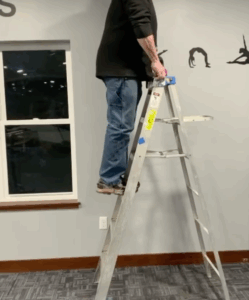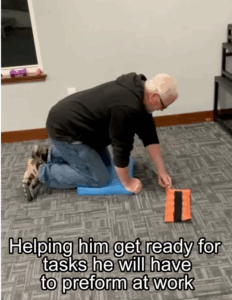Elderly Injury Prevention, Recovery Recommendations
Recovering from a fall or injury is especially critical for the elderly, as even seemingly minor incidents can lead to serious complications if not managed properly. The recovery process should begin immediately after the fall, starting with a careful assessment to rule out fractures, head injuries, or any signs of internal trauma. If the injury is minor and swelling is present, applying a gel ice pack is an effective first response. Gel ice packs are ideal because they contour to the body, delivering cold therapy directly to the affected area.
Ice Down The Injury Immediately
This cold application helps constrict blood vessels, reducing inflammation and numbing the pain. For optimal results, the ice pack, such as these, should be applied for 15 to 20 minutes at a time, several times a day, with a cloth or towel between the skin and the pack to prevent frostbite. However, cold therapy is just one aspect of a comprehensive recovery and prevention strategy. Rest is essential, allowing the body to heal without added strain. Elevating the injured area above heart level, if possible, can also help reduce swelling. Once pain subsides and mobility begins to return, gentle exercises or physical therapy may be recommended to restore strength, flexibility, and balance.
Ounce Of Prevention
 Beyond recovery, preventing future injuries is crucial. Many falls are the result of a combination of physical weakness, poor balance, unsafe environments, and medical conditions. Therefore, fall prevention starts with a holistic look at the individual’s lifestyle and surroundings. Home safety modifications can significantly reduce risks: this includes installing grab bars in the bathroom, improving lighting throughout the home, removing tripping hazards like loose rugs or clutter, and ensuring that commonly used items are within easy reach.
Beyond recovery, preventing future injuries is crucial. Many falls are the result of a combination of physical weakness, poor balance, unsafe environments, and medical conditions. Therefore, fall prevention starts with a holistic look at the individual’s lifestyle and surroundings. Home safety modifications can significantly reduce risks: this includes installing grab bars in the bathroom, improving lighting throughout the home, removing tripping hazards like loose rugs or clutter, and ensuring that commonly used items are within easy reach.
Regular physical activity is another cornerstone of injury prevention. Engaging in low-impact exercises like walking, swimming, or tai chi can improve balance, coordination, and muscle strength, all of which contribute to stability and confidence in movement. In addition, routine vision and hearing checks are important, as sensory impairments can lead to misjudging distances or reacting too slowly to prevent a fall. Proper footwear also plays a role — shoes should offer non-slip soles and good arch support. Medication management is another often-overlooked factor; some prescriptions may cause dizziness or drowsiness, increasing the risk of falls. Seniors and caregivers should regularly review medications with a healthcare provider to avoid negative interactions.
Remaining Strong Mentally
 Emotional well-being also plays a role in recovery and prevention. After a fall, some elderly individuals may develop a fear of falling again, leading to reduced activity levels, which in turn increases the risk of future falls. Encouraging confidence through gradual movement, supportive therapy, and family involvement can help overcome this fear. Using assistive devices like canes or walkers when appropriate can offer added stability and reassurance. In summary, recovery from a fall in the elderly should involve immediate, targeted care like the use of gel ice packs to reduce swelling, followed by a well-rounded strategy that incorporates physical, environmental, and emotional elements to ensure both healing and future prevention.
Emotional well-being also plays a role in recovery and prevention. After a fall, some elderly individuals may develop a fear of falling again, leading to reduced activity levels, which in turn increases the risk of future falls. Encouraging confidence through gradual movement, supportive therapy, and family involvement can help overcome this fear. Using assistive devices like canes or walkers when appropriate can offer added stability and reassurance. In summary, recovery from a fall in the elderly should involve immediate, targeted care like the use of gel ice packs to reduce swelling, followed by a well-rounded strategy that incorporates physical, environmental, and emotional elements to ensure both healing and future prevention.